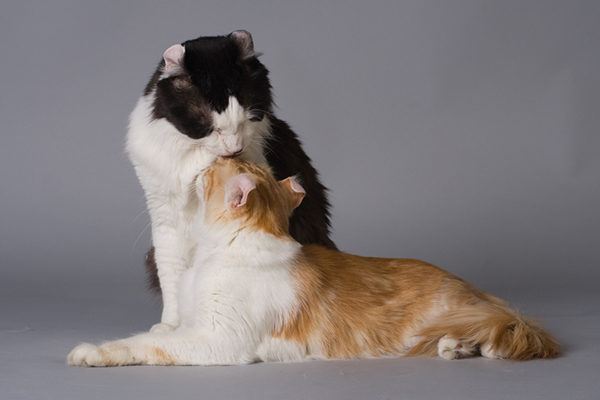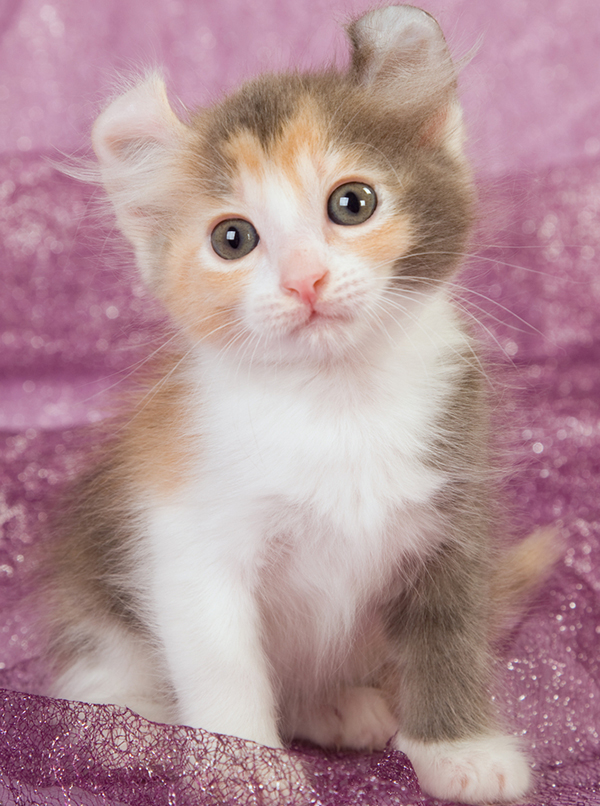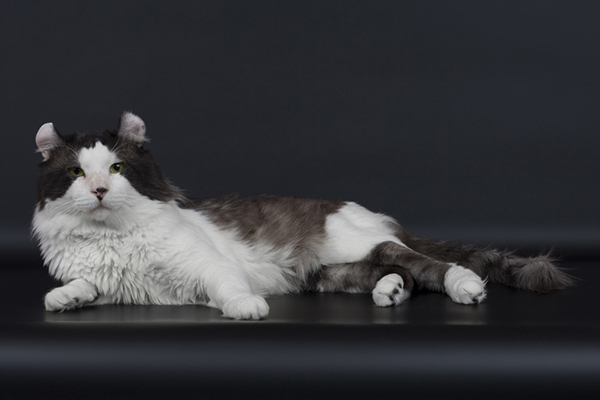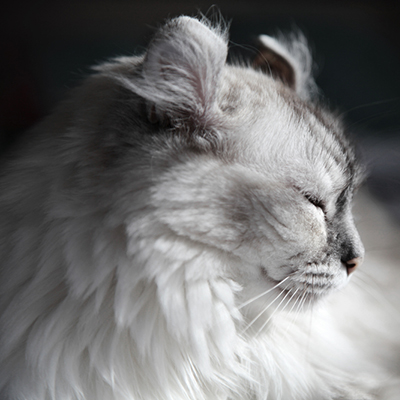Who’s that sweet-tempered, outgoing cat with an innocent and happy face and the strangest little ears you’ve ever seen? It’s an American Curl, welcoming you into her world with a trilling chirp of joy.
Origins
The story of the American Curl began like most amazing cat stories do: In June of 1981, a stray black kitten found herself on the doorstep of a pair of cat-loving people, who took her in and gave her a home and a name — Shulamith. Those cat lovers were Joe and Grace Ruga of Lakewood, California, who realized that not only was this cat very affectionate, but her ears looked a little bit odd.
Apparently Shulamith was an indoor-outdoor cat, because six months later she gave birth to a litter of four kittens, two of whom had the same curled ears as their mother.
In 1983, breeders began selectively breeding for the curled-ear trait. The American Curl was recognized by the International Cat Association in 1987 and by the Cat Fanciers Association in 1993.

Appearance
American Curls come in almost every color and pattern known to feline-kind, as well as in long-haired and short-haired coats. They are medium sized cats, generally weighing between seven and 10 pounds, with rounded heads with substantial muzzles and obvious whisker pads. Their curled-back ears contribute to an open expression that radiates happiness and good cheer.
American Curls’ coats are soft and silky, and longhaired Curls also have gorgeous, plumed tails.

Health and longevity
The American Curl is a relatively new breed, and Curls are still being outcrossed with non-purebred cats to ensure that the gene pool remains diverse. Like most standard-issue moggies, a well cared-for American Curl can live 15 years or more. They are not known to be prone to any breed-specific diseases.
Although the mutation that produced the unique ears of the Scottish Fold can create health problems, this is not the case with the mutation that produced the American Curl. Renowned English feline geneticist Roy Robinson worked with Curl breeders and analyzed the data on 383 kittens from 81 litters and determined this to be the case.

What it’s like to live with an American Curl
If you want a cat who follows you around everywhere out of sheer curiosity and love, the American Curl is the breed for you. Your American Curl will gladly hang out with you all day and night, and she’ll even pat you if she wants more attention from you than you’re giving her. She approaches life with exuberance and energy, and many sources say that you can expect your Curl to maintain her kittenish demeanor well into her old age, hence the moniker of “the Peter Pan of cats.”
You can expect your Curl to be kind to everyone and to understand her place within the hierarchy of other pets who share your home. She adores children and cat-friendly dogs, and the joy and exuberance with which she greets each day will bring a smile to everyone’s faces.
Although the American Curl isn’t a particularly talkative cat, your Curl will let you know with some gentle trills and coos when she would like your attention or wants her supper.
Your Curl doesn’t require a lot of grooming: a weekly once-over with a comb or brush should do the job. Check her ears for excessive wax buildup or infection during those weekly grooming sessions, but be sure not to handle or fold them too roughly or you may break the cartilage.

American Curl trivia bits
- American Curl kittens are born with straight ears. They start curling backwards when the kittens are between three and five days old.
- The gene that causes the ears to curl is an autosomal dominant gene, which means a cat only needs one copy of the gene to have curled ears. That also means a sizable minority of American Curls have straight ears because they have no copies of that dominant gene.
- The more tightly curled an American Curl’s ears are, the more highly coveted and expensive they are.
Do you have an American Curl in your home? What’s it like to live with him or her? Please share your thoughts and photos of your American Curl in the comments.
Read more about cat breeds on Catster:
- Get to Know the Ragdoll: A Large, Laid-Back Lap Cat
- Get to Know the Chartreux: A Smart Cat With a Fixed Smile
- Get to Know the Bombay: A Mini Panther With a Charming Nature
- Get to Know the Persian: The Original Feline Nobility
- 5 Purebred Cat Breeds I’d Have a Hard Time Saying No To
- Get to Know the Egyptian Mau: A Sensitive Cat With a Wild Look
- Get to Know the Siberian: The Folk Cat of the Great Frozen North
- Get to Know the Manx: A Mighty Hunter and Sweet Companion
- Get to Know the American Shorthair: One of America’s Original Cats








